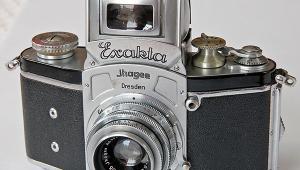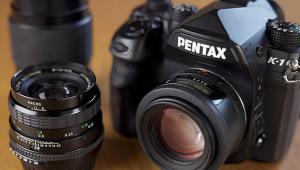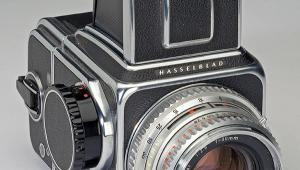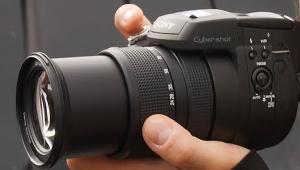A Leica Panoramic Head; A Bit Before Its Time, Though A Tad Off Its Mark
Here's an accessory from the 1930s which is probably easier to use today, in the digital era, than when it was new. It's quite simply a click-stopped panoramic head (Panoramkopf), Leitz telegraphic code name FARUX, with--this is the good bit--interchangeable rings for different focal lengths. FARUX came with a 5cm ring but you could also buy the accessory rings for 2.8cm (FOONW), 3.5cm (FAROS), 7.3cm (FAWAG), 9cm (FAXIS), 10.5cm (FASKI), 13.5cm (FARLY), and 20cm (FOOQL). Most were introduced in '32/33 but FOONW and FOOQL appeared in '35. There was also an earlier panoramic head with a fixed ring, FIAMA, introduced in '28 for the fixed-lens Leica.
|
|
|
|
The principle is easy. You select the appropriate ring and fit it; add the camera-mount plate FIAVI, which also has a shoe for the spirit level FIBLA or DOOLU (and DOOLU was also available in chrome as DOOLU CHROM as an alternative to the black-paint version); put the camera on top of the Panoramkopf; mount that on a tripod; make sure the head is dead level, using DOOLU; and then take a series of pictures at the appropriate click stops. Butt these together and you have a panorama. Easy, no?
No. The first problem lies in finding all the bits: without a FIAVI, the tripod socket of a rangefinder Leica is a bit awkward because it is at the end of the base plate, instead of in the middle under the lens, and although a FIBLA or DOOLU (the latter CHROM or not) is not essential, it does make life easier. I had a FIAVI but not a DOOLU, but any shoe-mount spirit level will do. An easier approach was a Voigtländer with a central tripod socket, and a 135mm f/2.8 Elmarit-M with a built-in tripod socket on the lens.
One thing the FIAVI can do that the Voigtländer can't, however, is to hold the camera vertical. The hole that is used to take the tripod screw for the landscape format becomes the tripod socket (into which you screw the FARUX) and the camera-retaining screw goes through a hole just under the accessory shoe. The panoramic head is no longer quite so perfectly under the center of the lens, but it's close enough.
The standard 5cm ring has 28 click stops, so each click is just under 13Þ. On the upper part, alternate clicks are numbered 1 - 2 - 3, etc. up to 14; #15 would be the same as #1. On the lower part, every third click is numbered, from 1 to 10, but 10 is one click from 1.
|
|
|
|
Now, the angular coverage of a Leica 5cm (50mm) lens on the short side of the negative is a fraction over 26Þ, while on the long side it is just under 39Þ. Those who wish to verify these figures--divide the focal length into half the format dimension, and take the arctan--should remember that although the Elmar was nominally 50mm, the aim point was actually 51.6mm and small variations in focal length were accommodated by machining a cam on the rangefinder coupling ring.
This means that there is little or no leeway or overlap in either orientation, portrait or landscape, which is a nuisance given that the easiest way to join prints without its looking too obvious is to cut along an existing break such as a wall, tree, or any other dominant vertical feature. In fact, it's probably best to use the "portrait" clicks with the camera held "landscape," as this allows about 30 percent overlap.



















































